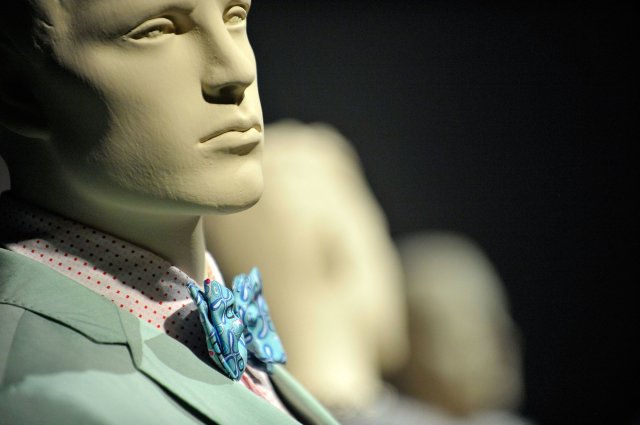Credit: Charley Gallay / Getty

All women live on a spectrum of misery because, we can only assume, we are women. I have endured attempted rape, and sexual assault on public transport. I have been fired from jobs for not being demure or flirtatious enough (because only two female archetypes are acceptable, and both have terrible pitfalls.) On my first day of work at a famous newspaper, a famous male journalist invited me to place a cigar in a place from which no words come. I giggled, and that giggle — it was a tragic giggle — tells you everything.
I will soon arrive, with some relief, at the glorious destination of being completely uninteresting to men. It’s called old age.
I know about misogyny, then — all women do. I know how it summons wreckage in women’s lives. I am poorer because I am a woman, I have lower status because I am a woman, and I am less confident because I am a woman. Although I am brave in print, in life I squeak like Minnie Mouse, and I wish I didn’t. I have had sexual experiences I did not want because I am a woman: and still, I know I’m lucky. I am a rich, white, western woman. Some people call it privilege. I call it the thick end of the wedge.
But I did not know how extensive — how absolute — the web of misogyny is until I read Invisible Woman: Exposing Data Bias in a World Designed for Men by Caroline Criado Perez. I read it while shouting at my husband. Perez is a sensible, second-wave Feminist — not a fourth-wave imbecile who thinks that prostitution is a valuable human right to be defended by those noble activists previously known as pimps. She campaigned for a statue of Millicent Fawcett to be placed in Parliament Square and a picture of Jane Austen (a sanitised portrait in which Jane looks pretty, because you can’t have everything) to be placed on a bank note.
I read the book in a rage. What is sensed, and lived, by women in a patchwork across class and continent is presented, in Criado Perez’s plain, detailed and almost overwhelming prose, as a self-perpetuating and all-consuming system of oppression and denial, in which women are an appendage to men, who have designed the world entirely for their own comfort and safety. There is no anger in Criado Perez’s pages — she is too busy with evidence for that — just as there is, as far as I can tell, no malice in this vast system of misogyny. It was all done thoughtlessly, like a man running over a child in the dark. The truth is, they just didn’t see us.
The book opens with Simone de Beauvoir’s words: “Representation of the world, like the world itself, is the work of men; they describe it from their own point of view, which they confuse with the absolute truth.” Criado Perez then spends three hundred pages proving de Beauvoir right, in chapters on environment, workplace, design, health, and politics.
Almost everything is designed for men. Cities are designed for men. Transport infrastructure is designed for men: when, for instance, did a wise woman last take a baby on the London Underground, which is clearly, during rush hour, unsafe, and yet usually a woman’s work? Why is money tossed at road-building, which favours “the unencumbered man”, not provision of public transport, which more women use on their longer, more potted trails through life? Even parks are designed for men, for unless care is taken to design them for women’s safety, fewer women — and girls — will use them, and their health will suffer.
One fascinating anecdote tells how, when the toilets of a theatre were made gender neutral, it only increased men’s space, for they used the cubicles in both, while women were, due to their bodies, denied the urinals. Women spend 97 billion hours a year, she writes, looking for a safe place to relieve themselves, and this is likewise detrimental to health. Invisible Women is full of such maddening insights.
The generalisations are accurate — women earn less, have less, care more for children and the elderly (which is spun, deceitfully, as “choice”) and slip into invisibility as the system devalues them. The would-be powerful woman — Hillary Clinton, for instance — is struck down for her presumption, and replaced with a dangerous imbecile. But it is the detail that compels.
For instance, in Britain, the Pregnant Workers Directive does not apply to politicians; there is, Criado Perez writes, “no provision for them [female politicians] to vote without turning up in person”. For politicians! In July 2018 the Conservative MP Brandon Lewis was paired with the pregnant, and absent, Liberal Democrat MP Jo Swinson. But he forgot, and voted anyway, and he got away with it. Apple, in 2017, declared that its US HQ was “the best office building in the world”. It had a spa and a dentist. It did not have a creche.
I would describe the condition of women in the workplace as a shit storm. People who believe they are meritocrats are the least likely to be meritocrats. Universities and tech companies who boast of being ‘woke’ are among the worst employers. Bias against women is everywhere – see the archetypes — and without care and research, it thrives. Blind auditions for orchestras raised female representation by 45%. In academia, double-blind reviews (where the author and reviewer are anonymous) mean that female authored papers are more likely to be accepted, and better rated. For women to thrive as men do, their gender must, quite literally, be masked.
This bias leaks into the schoolroom — where girls learn that scientists and geniuses are male; misogyny is not inbuilt, but learned. Algorithms, invented by men, favour men. We corrupt children, and we corrupt computers, and, in turn, they corrupt us.
Every victory contains a defeat. Female soldiers are injured off the battlefield because they are forced to march in step with men. Packs that took breasts into account were not invented until 2011, 35 years after women were admitted to US military academies. Female coastguards in the UK cannot easily use the toilet on duty — see the 97 billion hours above — because the clothes are not designed for them. In 1997, a female police officer died in the UK because she removed her body armour to operate a hydraulic ram, which she could not use while wearing body armour that did not fit her because it was designed for a man.
There is too much death in this book — some caused by sexual assault, because women’s spaces are unsafe or non-existent, and some caused by negligence, because women’s bodies are forgotten. There is so little investment in pelvic floor health, for instance – men decide what is suitable for research, and they forgot the female pelvic floor — that a current scandal details how women with prolapsed vaginas had mesh inserted as a cure. Many were left with chronic pain. At least one, in Scotland, has died. Women seeking help for physical problems are dismissed as fantasists, or trouble-makers. Viagra is plentiful. So is death in childbirth.
It’s comic sometimes, if you care to laugh at darkness. The voice command software in a Ford Focus did not respond to the female driver, but it did respond to her husband in the passenger seat — because it was programmed to hear a deeper voice. Criado Perez lost me only once, when she noted that the average smartphone is too small to fit easily into a woman’s hand. Not important, I thought, but then she detailed a riot in which a female researcher could not take a photograph with one hand, while a male one could. It’s a tiny thing, but it brought disadvantage, glibly.
This is a brilliant book, then, to thump the gropers and the deniers with — the people who point out masculine suffering, which is real, to detract from female suffering, which is likewise real. Everyone should read it.










Join the discussion
Join like minded readers that support our journalism by becoming a paid subscriber
To join the discussion in the comments, become a paid subscriber.
Join like minded readers that support our journalism, read unlimited articles and enjoy other subscriber-only benefits.
Subscribe